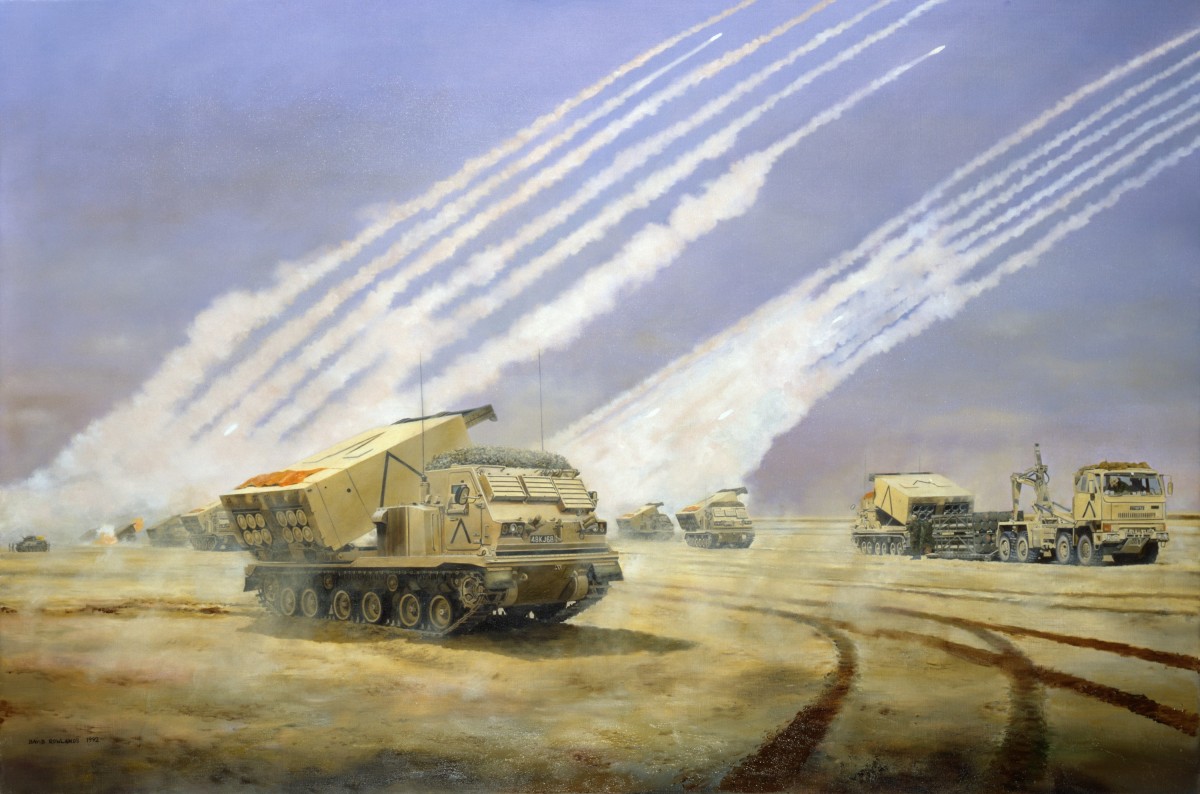Thirty years ago this month the Royal Artillery was at the heart of the United Kingdom’s contribution to the multinational coalition Operation Desert Shield to drive Saddam Hussein’s Iraqi troops out of Kuwait. A thunderous air assault on military, economic and communications targets was launched on 16th January 1991 and just over a month later, on 24th February, the ground forces commenced their offensive. Within four days the operation was complete, Iraqi forces were comprehensively defeated and Kuwait was liberated.
![]()
Six Gunner regiments deployed on Operation Granby with M109s, M110s, MLRS and Rapier (see details below) but many detachments and individuals from other units went with them to bring them up to war establishment. For example two of 2nd Field Regiments three batteries of M109s were provided by 27th and 49th Field Regiments. This method of delivering fully manned Gunner units underlined just how hollowed out the peacetime structures had become. The same was true of equipment with the requirement of wholesale cannibalization of the armoured vehicles left behind in the Gunners’ barracks in Germany. One officer in 49th Field Regiment (based in Lippstadt) recalled that the Regiment’s undeployed guns were “a sorry sight, stripped of their main assemblies and barrels they sat in the garages like tuskless elephants”.
- 2nd Field Regiment RA (M109: 155mm self propelled tracked close support howitzer)
- 12th Air Defence Regiment RA (Rapier: tracked and wheeled medium range anti-aircraft missile system)
- 26th Field Regiment RA (M109)
- 32nd Heavy Regiment RA (M110: 8 inch self propelled tracked depth fire howitzer)
- 39th Heavy Regiment RA (MLRS:long range armoured, self propelled multiple rocket launcher)
- 40th Field Regiment RA (M109)
![]()
The Regiment’s first significant contribution to the war effort came with the gun raids which commenced on 7th February. These were designed to overcome the longer range of the Iraqi artillery. Batteries moved forward to predetermined positions, fired a barrage of rounds at selected targets, and then withdrew quickly to avoid counter-battery fire. As well as hitting enemy targets, these raids allowed the Gunners to practice their fire and movement ahead of the rapid advance into Iraq and Kuwait. Between 24-27th February the Gunners provided artillery fires support during the advance north for the two British brigades, suppressing or destroying Iraqi positions effectively and minimizing the need for close combat arms engagements.

The Gunners support represented the greatest concentration of fires provided by the Regiment since the Second World War. Examples of all of the main artillery pieces deployed are held in the RA Collection and are conserved by the museum staff so that current and future generations can view them.
The paintings of Royal Artillery regiments deployed during the Gulf War were commissioned from David Rowlands who was the only artist with the British forces during the conflict.
